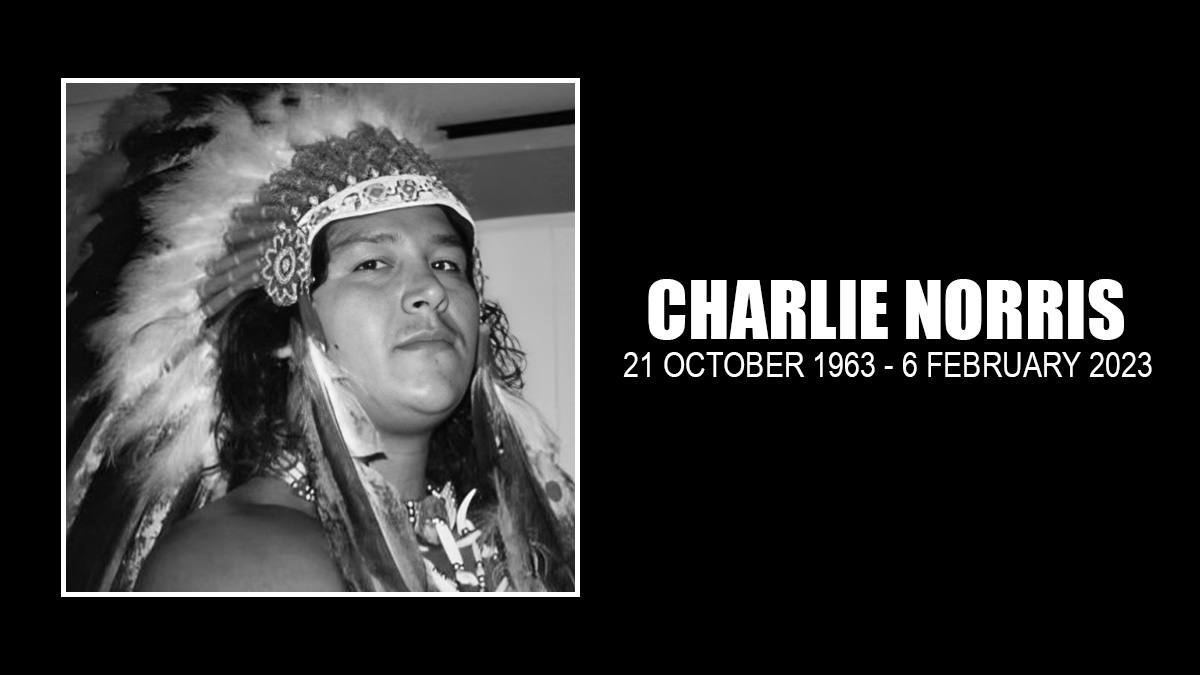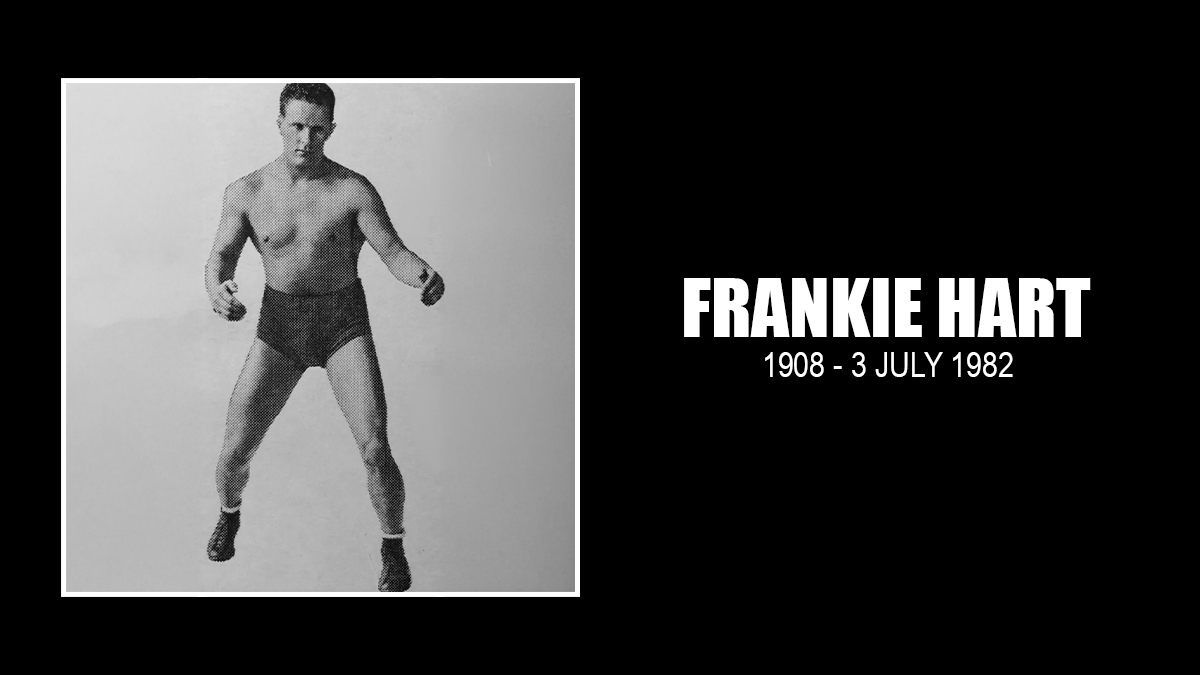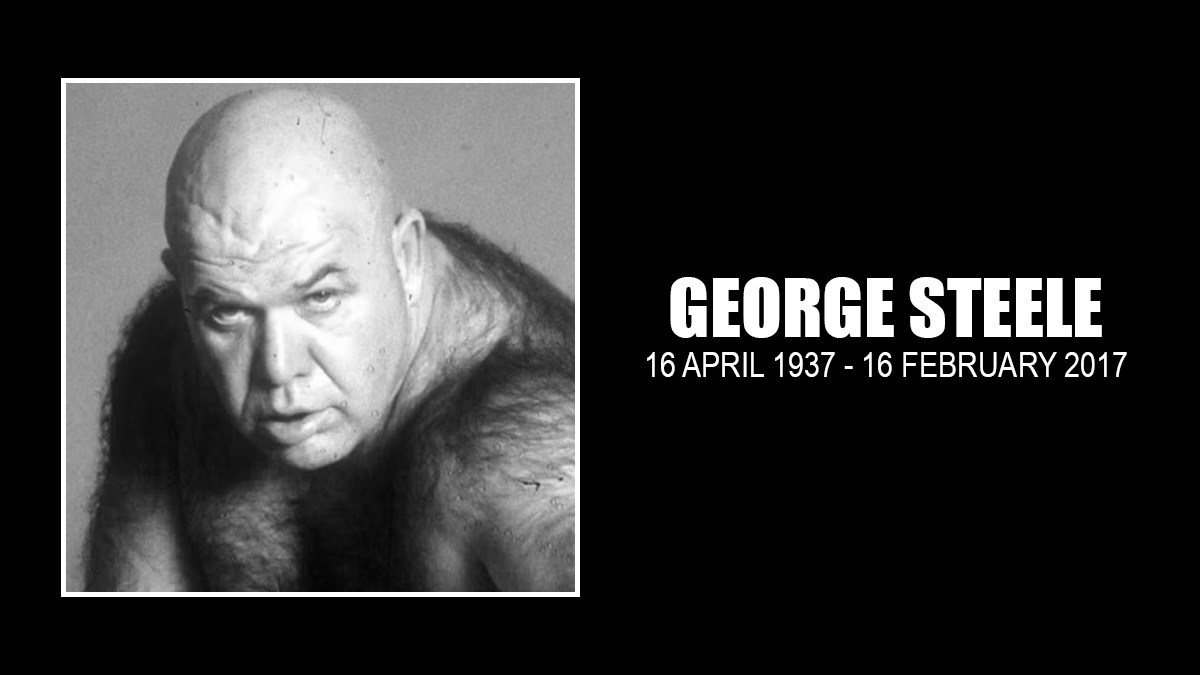“Thunderblood” Charlie Norris, the Chippewa wrestler who made it to World Championship Wrestling, leaving over his treatment there, has died. He was 59.
Details are still coming in. Long-time Minnesota announcer Mick Karch said that Norris died in Red Lake, Minnesota. A niece confirmed the news on Facebook. “Omg no not my uncle Charley Norris 😢 😢 😢 RIP man he always had something to message me I had a chance to go say hi the other day but didn’t SMH man that’s always gonna bug me now,” wrote Shantel Potter Brun.
Norris was born October 21, 1963, in Red Lake, Minnesota, and went to Red Lake Senior High School, a part of the Red Lake Indian Reservation. He was close with his family, learning from his elders. Always athletic, he filled out into a 6-foot-6, 298-wrestler by the time Eddie Sharkey had finished training him. By day, Norris had been a youth counselor.
Sharkey only trained Norris for two months, before Norris debuted on December 3, 1988, against Bulldog Derringer. He later went to Brad Rheingans for further schooling.
“I always felt I would do well because I had the athletic ability,” Norris told the Pro Wrestling Torch in 1993. “It was just the mystique of it. I liked the violence of it and the overall picture of wrestling. I also liked to talk to kids. I like being a role model for kids.”
With the AWA all but gone, Norris was a regular around the Midwest, with Pro Wrestling America, often with Derrick Dukes. He kept his name, but the nickname changed here are there: Thunderblood, Thundercloud.
His trainer, Sharkey was always a fan and promoted Norris, once calling Norris “the Hulk Hogan of Minneapolis.” Sharkey’s birthday was February 5, and Norris had posted a photo and a line of appreciation on Facebook: “Eddy Sharkey taught me long ago that being strong is our only option !!!!”
Sharkey told this writer in 2006 that Norris was missed potential. “Charlie Norris could have been a big star. Never got in good enough shape. He could have been one of the biggest stars in the world.”
Norris had a tryout with WWF in 1991. It didn’t work out, in part because, as Norris said it, Joe Scarpa, an Italian from New Jersey who had wrestled as Chief Jay Strongbow, wanted him to really change his gimmick — which had been true to who he actually was, a proud Chippewa.
“[Me] and Strongbow didn’t hit it off from the get-go,” Norris told the Torch. “He wanted me to do stuff that I thought was really offensive to my culture. I told him, ‘With all due respect, you’re not a real Indian yourself. It’s really offensive for me to do that.’ Next thing I know, they took the other guy.” He was referring to Chris Chavis, who wrestled as Tatanka.
Norris continued trying to explain his problem with Strongbow’s idea:
Strongbow wanted me to act like, I don’t know what you’d call it, a John Wayne Indian I suppose. I really didn’t like it at all. he wanted me to run around like a crazy man. The dancing part is good, because I can do that. I don’t do that in Minnesota and I hope everybody can see me do that soon. I guess I’m really shy in front of my family. But I am a really good dancer. I told [Strongbow] that I couldn’t [compromise my culture] because I’ve got to go back to my Reservation, to my family, and what are they going to think of me if I’m making fun of them?
In 1993, Norris had been courted by WCW, and debuted in August of that year, primarily working the promotion’s Saturday Night shows initially. He was a mid-carder for his run there, teaming with various partners like The Shockmaster and Ice Train, thought appearing on a few pay-per-views, like Fall Brawl, Halloween Havoc and Battlebowl.
However in early 1994, Norris abruptly left WCW, and to the independent scene around Minneapolis. He wrestled, off and on, until 2006. Norris also helped train students with Sharkey and promoted shows himself — Norris had an in at Native-run casinos that Sharkey couldn’t access.
In November 1994, Norris filed suit in U.S. District Court in Minneapolis, suing both World Championship Wrestling and Greg Gagne, who was working backstage in WCW, specifically for breach of contract and racial discrimination. Dave Meltzer wrote about the suit in The Wrestling Observer Newsletter:
Norris, 31, a Chippewa Indian, complained that upon joining with WCW he was told to perform stereotypical Indian actions in the ring. He said he reluctantly went along with those demands by his supervisors, but when he ultimately refused, saying he felt demeaned by doing the screams, dances, tomahawk chops and war hoops, he was then fired for having a bad attitude and being lazy and uncooperative.
Norris claimed in the newspaper article that upon joining WCW, he was sent to their training camp and claimed he was made fun of and demeaned by them trying to teach him how to dance like an Indian. Norris said Gagne made things worse by calling him “Big Chief” and repeatedly demonstrating how the promotion wanted him to dance in the ring. Norris suit claims the company reneged on increasing his weekly salary from $800 to $1,500 per week after three months and refused to give him any extra money for appearing on a PPV show, and reneged on promises to pay for his travel and costume expenses. Norris claimed WCW would only promote whites as wrestlers and relegated all others to character actors who were to be presented only by their racial stereotype. He said on interviews they wanted him to refer to his grandfather as Chief Big Sky and talk about going on the warpath during his interviews.
The suit was settled out of court, for a reported $50,000.
Over the last few years, Norris appeared on a couple of podcasts, discussing his career, including Two Man Power Trip of Wrestling and with Glen Braget on his Rasslin Memories Then and Now show.
On the Two Man Power Trip of Wrestling show, Norris noted that in WCW, Ole Anderson was in charge when he was hired, and then Eric Bischoff took over. “That was the beginning of the end for WCW,” he told the podcast. “This guy didn’t have a damn clue about anything, what he was doing. I got a contract and Ole [Anderson] got demoted and Bischoff wouldn’t honor my contract. I’m like ‘Come on, another eight, nine months?’ So I had to sue to get my money and I won very easily. Jesse Ventura was my star witness and Sid Vicious too [was] one of my witnesses… They were trying to tell an Indian how to be an Indian. It wasn’t, you know, Bischoff just, yeah, I think his track record speaks for itself.”
One of Norris’ partners on the indy scene was Sam Houston, and they were The Renegades. Houston posted to Facebook after Norris’ death: “”Hey y’all, it is with the heaviest heart that I inform you of the passing of my friend, my brother, White Thunderbird, Charley ‘Thunderblood’ Norris. As ‘The Renegades’ , we travelled the world, did it our way, it’s been said we didn’t like rules. Ya know, Charley had my back. He was and still is inspiration for us all. I have been cut deeply by this pain, preparing for my journey up north. I ask for prayers for strength, comfort, and compassion through these most difficult times. God bless you all, pray and thank Him for what you have.”
Norris was a big part of the Red Lake community.
Funeral arrangements are not known at this time.




